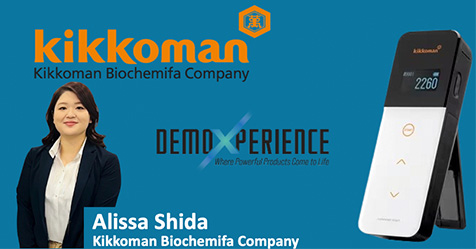The only thing modern society appears to enjoy more than using new technology is celebrating new technology.
Cell phones, robotics, computing power and the scope of the Internet are all subjects discussed daily in commercials, online videos, news reports, movies and television.
Even in this “technology all the time” world, there are a number of strong industries thriving that still serve some of mankind’s most basic needs.
Utility companies, healthcare facilities and agriculture operations are a few examples — as are cleaning and hygiene businesses and departments.
Even in the age of smart homes and high-tech office buildings, cleaning remains a stable, if somewhat traditional, industry.
When it comes to technology in this market, one of the most pressing questions is: How can newer technology help to advance and standardize the industry overall?
Because cleaning is done everywhere, every day, by a multitude of people, creating any consensus on industry standardization is a definite challenge.
Yet, as the Internet has connected the rest of the world, it also can create accelerated communication for the cleaning industry.
Technology can contribute to improved communication between:
- Management and workers
- Cleaning operations and clients
- Equipment and supervisors/workers
- Different operations.
In this connected environment, technology and IT departments will be, and are already becoming, especially important.
There is no doubt that operations can increase cleaning speed and efficiency by calling upon new, connected technology.
The true challenge is actually getting rid of more germs while working faster and finding ways to further drive these hygienic results.
Science and innovation are going to make a difference, and investing in technology is set to become a best practice.
To this point, one theme was repeated often during the recent World Federation of Building Service Contractors (WFBSC) Congress in New York City.
Simply put, technology’s main task is to serve its users.
More than one speaker at WFBSC explained that if a new technology does not have the ability to pay for itself through efficiencies, then it is not worthwhile technology.
Keeping this idea in mind, operations that embrace and invest in technology will see payoffs through productivity improvements, decreased employee turnover and increased occupant health and safety.
Over time, the companies that embraced the future with enthusiasm will survive and flourish; those that did not will ultimately fall backwards or collapse.
Today’s Tool Tech
In the cleaning industry, there are areas where manual tasks have been completed by workers using the same tools for decades — sometimes even centuries.
Even so, there are corporations, startup companies, entrepreneurs and inventors working to create easier ways to clean every day.
This is a testament to the importance of cleaning and, further, to the strength of the professional cleaning market.
Over the past few decades, the march of innovation has brought the industry an array of improved cleaning and maintenance tools.
Microfiber: Microfiber towels offer a number of advantages over towel options used previously.
The traits of microfiber towels make them ideal for a number of uses, including surface cleaning.
Properly folded and using just water, microfiber towels can remove soils from a surface instead of spreading them around.
This process can be an improvement over aggressive cleaning chemicals and ineffective traditional tools.
Microfiber and water cleaning can also be ideal for surfaces that may be susceptible to etching, discoloration or other damage concerns.
Flat mops: Also tied in with microfiber tools are flat mops that utilize microfiber mopping pads.
Lighter than damp traditional mops, flat microfiber mops can be easier to work with, and they help workers avoid repetitive motion injuries and physical strain.
Workers can change out microfiber mops ahead of time instead of wringing out traditional mops, and microfiber mop pads also limit the need for employees to pull or push a bucket with gallons of cleaning chemicals inside.
These mopping differences can improve worker efficiency and increase facility safety.
Spray-and-vac systems: Currently, different types of spray-and-vac systems are available to the professional cleaning market.
Called upon to clean the most challenging spaces in commercial buildings — restrooms, kitchens, locker rooms, etc. — these systems replace traditional cleaning tools with high-pressure sprayers and powerful vacuums.
They work by applying chemicals to surfaces and then removing the chemicals, soil and contaminants via vacuuming.
The high-pressure spray loosens soil and contaminants, and the vacuum takes the moisture and undesirables away, leaving the cleaned areas dry and ready to use.
Autoscrubbers: Finally, a number of new options can be called upon for hard floor care.
Autoscrubbers are continually evolving, and they can be depended on for:
- Daily floor upkeep
- Floor scrubbing
- Tile and grout cleaning
- Floor finish removal.
Utilizing autoscrubbers in a cleaning operation can extend the time between required refinishes and eliminate the need for toxic strippers to remove a finish.
With battery-powered variations of autoscrubbers, and even a worker-powered cleaner option appearing in the market, this technology choice is becoming more prevalent in facilities of all types.
More Technology, Less Chemicals
The increase in cleaning technology is also a boon for the cleaning industry in that it allows for more effective results without a growing need for chemicals.
In fact, technology-enabled monitoring options available for cleaning equipment now offer chemical use advantages.
First, some equipment can track and adjust the amount of chemical needed in real-time while it is performing a cleaning task.
In addition, equipment usage reports can show a manager or worker the amount of chemical consumed during a set time of operation.
If too much chemical is being used due to dilution issues, user error, etc., the reportage allows for a quick correction, and this prevents the problem, and the associated costs, from escalating.
Another way technology can be called upon to cut costs and improve safety and results is through the use of on-site cleaning chemical generation.
The on-site creation of super-oxidized water reduces or eliminates the need for conventional daily-use cleaning chemicals in many applications, according to Henry Dao, president/CEO of HSP USA, LLC.
Dao notes that the solution created can replace:
- Hospital grade disinfectants
- Food contact sanitizer
- Deodorizer
- Multi-surface cleaner
- Glass cleaner
- Stainless steel cleaner
- Floor cleaner
- Carpet pre-cleaner
- Bathroom disinfecting cleaner.
Further, it is compatible with cleaning tools and equipment, and it is suitable for use on both hard and soft surfaces, Dao says.
Citing an option from his company, Dao states that on-site generation systems can generate up to 2.6 gallons of solution per minute with no storage tank needed — workers just turn to the system when cleaning and disinfecting products are needed.
Using on-site chemical generation technology can offer cleaning operations a number of advantages over purchased chemicals.
Simplified operations: These types of systems generally require only tap water and electricity to operate.
On-demand generation reduces the storage space needed, reduces the amount of chemicals handled or used, and simplifies chemical management programs, Dao says.
Facility safety: The product Dao’s company produces is nontoxic to humans and animals, with independent research showing no known health risks associated with the product’s intended use.
The solution contains no VOC or synthetic toxic fragrances, and it is biodegradable and does not harm the environment, according to Dao.
When used on floors, it improves traction and reduces slip-and-fall accidents, Dao states.
Lower costs: Meeting the “good technology pays for itself” concept stated earlier, this technology offers operations a prompt return on investment due to the daily cleaning chemicals it can replace.
It also reduces the need for businesses or facility operations to buy, transport and dispose of cleaning chemicals and packaging.
Companies that choose to invest in super-oxidized/electrolyzed water technology report cleaning performance improvements, improved facility and worker safety, lower costs and an up to 100 percent elimination of toxic cleaning chemicals, Dao concludes.
Reportage, Shared Data And Mobile Technology
The equipment chemical reportage discussed previously is just one example of the affect that mobile technology and shared data options can have on cleaning operations.
Improved communication: As discussed at WFBSC’s congress event, technology driven by on-board analytics stands ready to create even more lines of communication that will increase a department’s ability to react.
Even for small- and medium-sized operations, tracking management systems will become a necessity in the not-too-distant future.
Tracking management systems that are web-based and cloud-based will allow managers and supervisors to know what is being done where and when it is finished.
Reports also will show who completed the task and include any issues that should be flagged for follow up.
As this technology becomes cheaper and cheaper, and can be customized to end users both large and small, it will create new transparencies between workers, supervisors, upper management and clients.
Even so, the use of technology in the field should never supplant person-to-person relationships.
Technology should be used to enhance client relationships, not replace them.
Client concerns: With these automated reportage and measurement systems, a cleaning operation can offer its clients a window into their daily service.
By tasking them with the important responsibility of managing a facility’s risk, as well as ensuring occupant health and safety, clients often depend on cleaning operations to provide full reportage and documentation.
Companies with the technology to provide pertinent information anytime and anywhere will benefit.
By having the client participate in the reportage process, he or she becomes an involved partner due to the information provided.
As stated, clients today are more inclined to delve into cleaning results, and in this way, many are assisting the push for new reportage technology in the cleaning market.
Pushing upsells: In a market that shows growing demand for multi-service companies, operations that utilize mobile communication technology can have a distinct advantage.
Using this new technology, these companies can field teams to address and upsell clients on enhancements and additional services in the field.
This quality-of-life improvement provided by mobile technology lets a representative:
- Focus on volume
- Work smart
- Follow the schedules of clients.
Employee involvement: Finally, mobile technology can support employees by providing more information and knowledge.
Workers that clean using their brain lead to operational efficiency, and as operations provide better tools and more training, they develop employees’ self esteem, positively affecting turnover.
Giving workers ownership of a task with improved technology has a positive impact on the industry’s workforce.
The potential is there, and even employees with no education can become expert cleaners through the use of new technology.
Reducing Labor Usage
Speakers at WFBSC noted that cleaning and maintenance currently has an extremely high requirement for labor.
Currently, many cleaning and maintenance operations require 100 percent labor levels.
As new technology is introduced into the market, building service companies and facility cleaning and maintenance departments will be able to depend less and less on labor.
As more new technology appears, workers in the cleaning industry will call on it to become more knowledgeable, and it will further drive the demand for professional employees while helping increase wages.
As cleaning practices become less labor oriented, operations will be able to rely upon newer technology to further attract and retain the latest generation of qualified cleaning managers and workers.
William (Bill) Griffin, noted industry trainer and president of Cleaning Consultant Services Inc., says cleaning managers today should realize workers need training, and they need to accept responsibility for continuing to improve workers’ skills and knowledge base.
“Our industry has done a terrible job of promoting the upward mobility opportunities available in the cleaning and maintenance fields,” Griffin states. “We need to help people understand that the cleaning industry is a good starting place as well as a great place to build lifetime career.”
Cleaning and maintenance operations should realize they cannot stop progress or technology, and over the next 30 years, engineering, science and robotics will replace the human as the primary provider of cleaning services, according to Griffin.
“How we deal with that transition will depend on how we begin preparing for the inevitable today,” Griffin states. “Training can provide us with a smoother ride on an otherwise bumpy road into the future.”
This encompasses the need to put coaching, counseling and training programs in place to help employees accomplish their personal goals while doing the best job they can for their customer and employer each day.
Griffin notes that there are valid and proven methods available that can turn the challenges this industry faces into opportunities for future growth and prosperity for everyone involved with and impacted by cleaning.
In closing, no cleaning operation should be afraid of new technology.
With improved communication, data gathering and cleaning results, management and business owners must plan on future investments and make sure they have training programs in place to take advantage of the latest technological advances.


